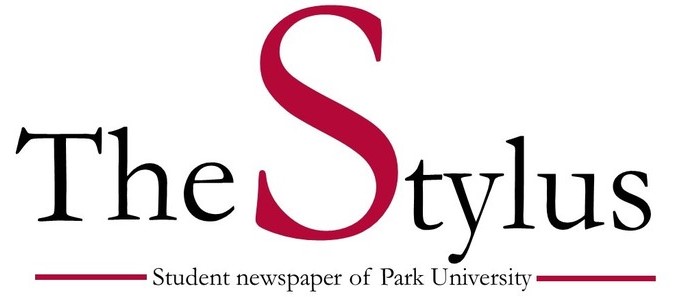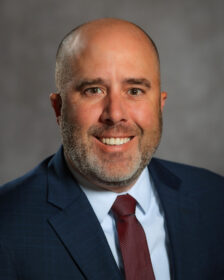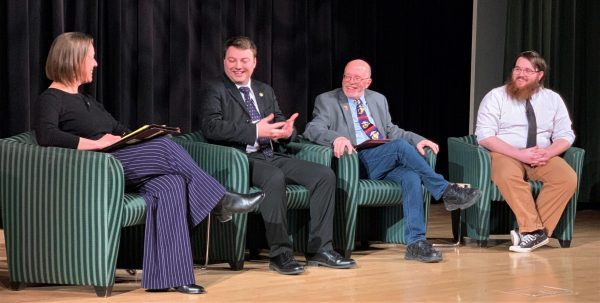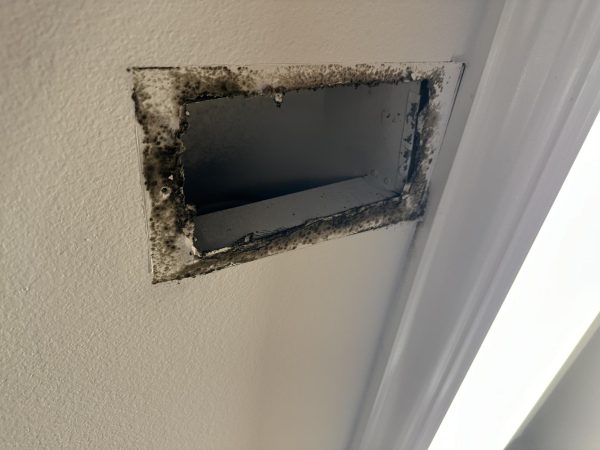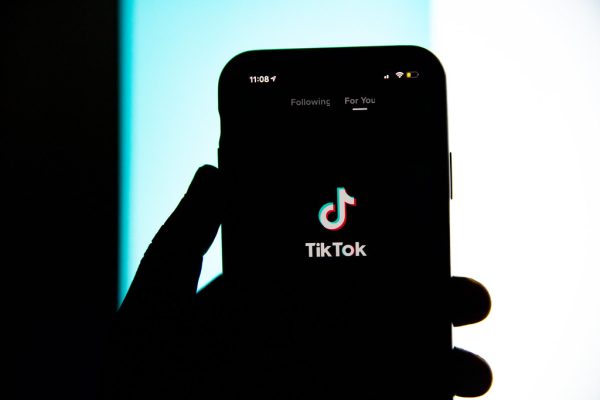Park University introduces COVID-19 symptom tracker
PARKVILLE, MO—College classrooms across the country have dramatically transformed this year as institutions shift courses online due to the coronavirus pandemic.
Park University has followed this trend for the 2020 fall semester by opting for predominantly blended and online courses, as opposed to the face-to-face learning that is typically offered on the Parkville campus, but this shift in course modality was not the only change.
When the fall semester began, the university introduced its COVID-19 Symptom Tracker, a daily tracker that is intended to aid students, faculty and staff in recognizing symptoms and likelihood of viral spread.
President Greg Gunderson, Ph.D., expressed a two-fold goal of the tracker, the first being that it informs students if they are able to come to campus that day and the second being that it makes people think about their responsibility to protect themselves and others.
“So our hope is not only does it give us some data if you have a temperature, and you have symptoms,” Dr. Gunderson said, “but more importantly, from my perspective, it gives you the chance to think every day about our responsibilities and that may make it easier for us to put the mask on and wash our hands and accept social distancing.”
The university’s administration has not yet publicly shared any of the data from the tracker concerning the Parkville campus student, faculty and staff infection rates or dorm isolation units being used. However, Dean of Students Jayme Uden, Ed.D., said the dashboard with that information would go live on MyPark for students in a matter of weeks. The COVID-19 dashboard is already available on MyPark for staff and faculty members to access.
“Honestly because we have not had a challenge here, we’ve not felt the need to communicate,” Dr. Gunderson said. “If we had things that were of concern we would be reaching out to students to talk about them in large group settings. We haven’t been posting things on the forward-facing part of our web like other schools have, but they have faced unique challenges that we haven’t.”
Dr. Gunderson further stated that the numbers to date have not been significant, and therefore, they have not been communicating as much as peer institutions, where infection rates have been steadily increasing.
On MyPark, the COVID-19 dashboard page states the information is updated and posted every Friday. However, on November 2, it had not been updated since October 22. At that time, the dashboard reported there were two of 402 Parkville employees in quarantine, four off-campus students in isolation and 10 off-campus students in quarantine.
The low infection rate at Park University has been largely measured through the COVID-19 Symptom tracker. Meaning, the data could become skewed if students don’t fill out the tracker, or if they fill it out dishonestly, as some students fear may be happening.
Freshman art education major Cassidy Bradshaw wrote in an email that the COVID-19 Symptom Tracker was one of the things she thought ineffective about Park’s approach to minimizing the spread of COVID-19.
“It’s easy to lie or to not do entirely,” Bradshaw said. “Though the thing I wish they could do is somehow check temperatures before entering a building, or a class. I know this is what lower education buildings are doing, and I think it could be beneficial to know if students are running a fever before they start to contaminate others.”
Despite her concerns around the tracker, overall Bradshaw feels the university is doing what it can.
“I think [Park] is working to its best ability,” Bradshaw said. “It is hard to completely halt the spread of the virus, though making sure that students wear their masks and wear them correctly is a big step.”
Ultimately, Dr. Gunderson wants the students to know that the university is doing what they can to ensure students’ safety, but that their safety is largely reliant on their own actions.
“We are putting our trust and our faith in our students,” Dr. Gunderson said. “I think that’s the most critical thing, and I could not be more proud that our students have stepped up in complying with the social distancing and in helping to see others, their peers comply has been incredibly helpful. That is where I put my faith in this and our students have delivered.”
Your donation will support the student journalists of Park University. Your contribution will allow us to cover our annual website hosting costs, freeing up other funds for equipment, printing and training.
